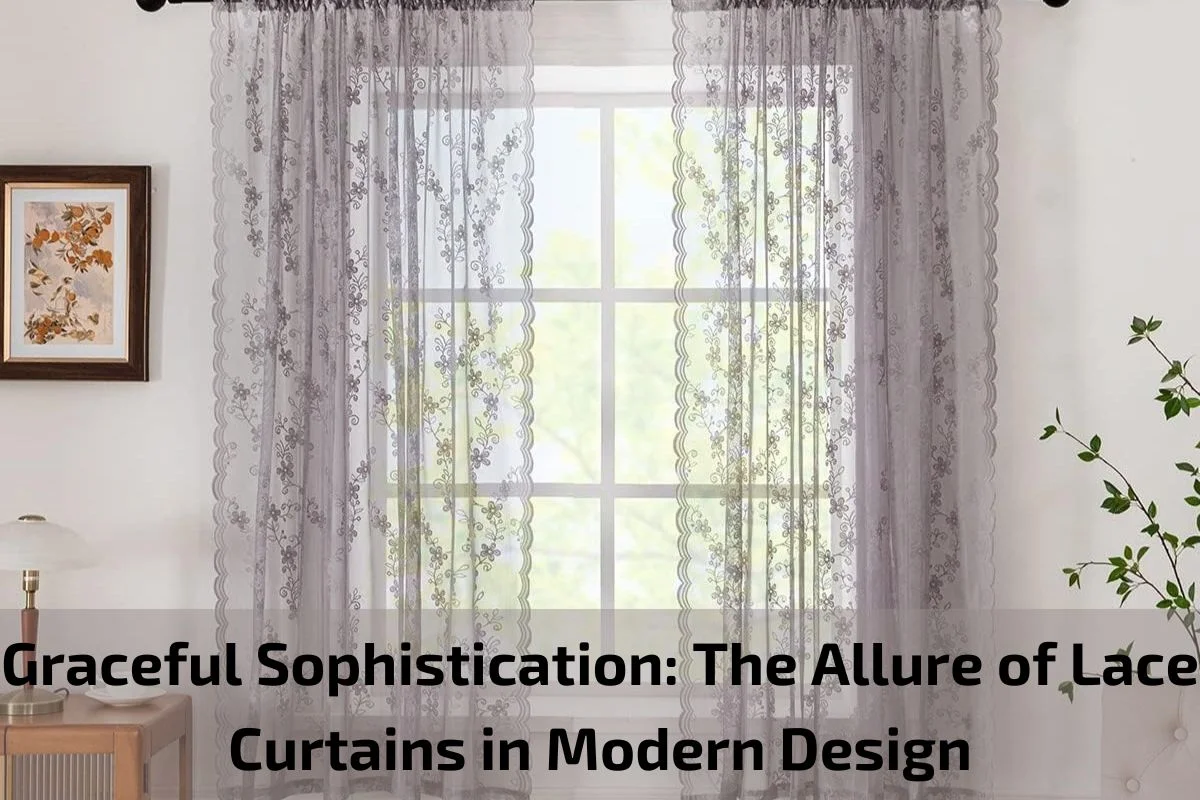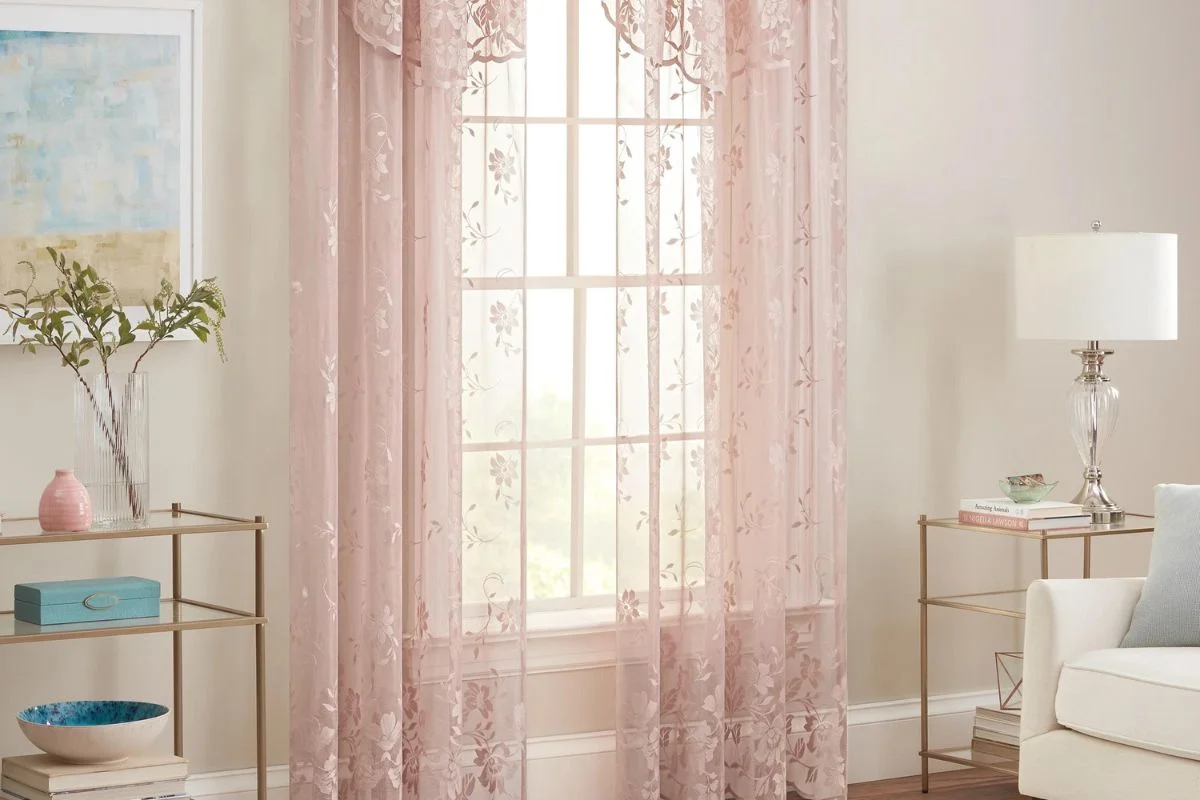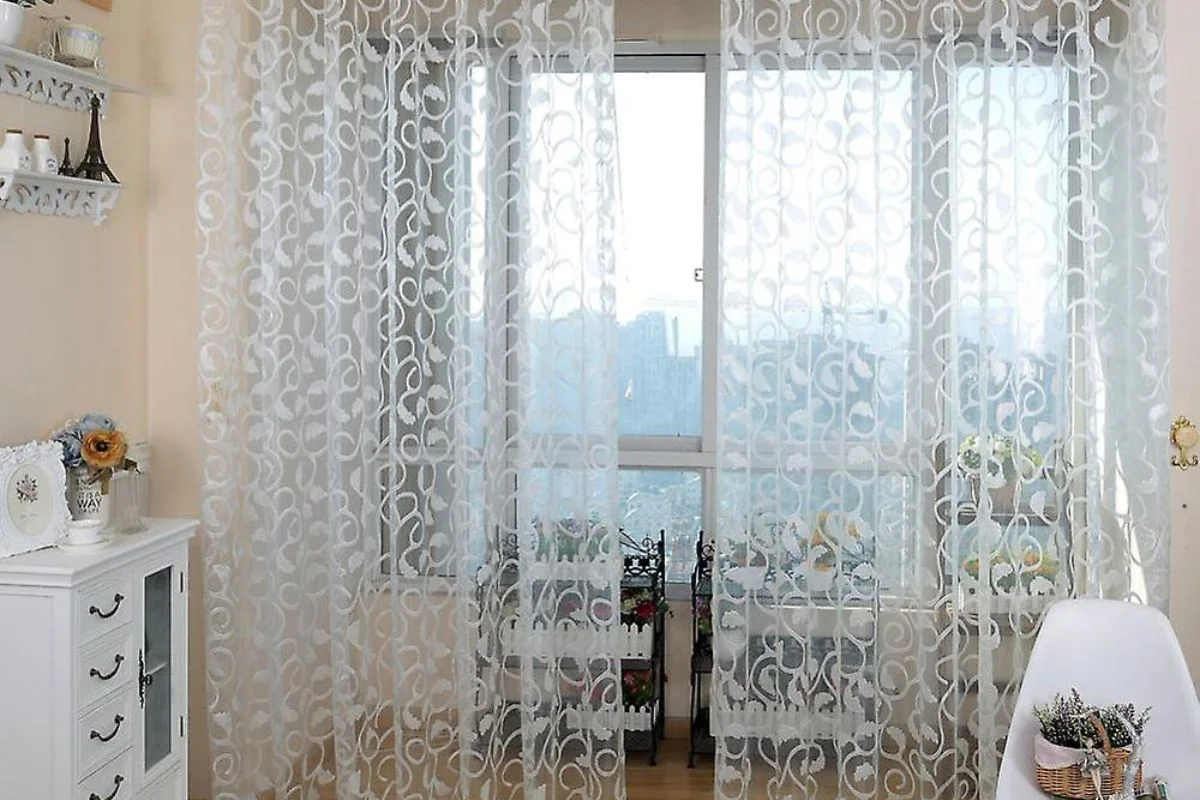Graceful Sophistication: The Allure of Lace Curtains in Modern Design

Welcome to our exploration of the enduring charm and graceful sophistication of lace curtains in modern design. Lace curtains have long been synonymous with elegance and timeless beauty, gracing windows with their delicate patterns and ethereal appeal for centuries.
In this journey, we will delve into the allure of lace curtains and their ability to infuse a sense of refinement and luxury into contemporary home decor. While lace curtains may evoke images of vintage elegance, they are also incredibly versatile and well-suited to modern design aesthetics.
Join us as we uncover the enchanting qualities of lace curtains and discover how they can enhance the ambiance of any room in your home. From their intricate patterns to their subtle translucency, lace curtains offer a unique blend of sophistication and charm that transcends time and trends.
So, prepare to be inspired as we explore the allure of lace curtains in modern design. Whether you’re drawn to their romantic allure or their ability to soften harsh sunlight while maintaining privacy, lace curtains are sure to add a touch of timeless elegance to your living spaces.
Brief History and Significance of Lace Curtains
Lace curtains have a rich history dating back centuries, with their origins rooted in Europe during the Renaissance period. Initially crafted by skilled artisans using intricate weaving techniques, lace curtains were a symbol of wealth and status, adorning the windows of aristocratic households.
During the 17th and 18th centuries, lace curtains became increasingly popular across Europe, particularly in France, Italy, and Belgium, where they were meticulously crafted by hand. However, it wasn’t until the Industrial Revolution in the 19th century that lace curtains became more accessible to the middle class. The advent of mechanized production techniques allowed for mass production of lace fabrics, making them more affordable and widely available.
In the Victorian era, lace curtains reached the height of their popularity, becoming a staple in interior design. They were favored for their delicate beauty, which allowed sunlight to filter through while providing privacy. Lace curtains were often used in conjunction with heavier draperies, adding a touch of elegance to both formal and informal living spaces.
During the early 20th century, lace curtains continued to be a prominent feature in home decor, particularly in the United States and Europe. They remained popular through various design movements, including Art Nouveau and Art Deco, adapting to changing tastes and styles.
Today, lace curtains maintain their allure and are still used to add a soft, romantic touch to interiors. While traditional lace curtains are still crafted using traditional techniques, modern manufacturing processes have also led to the production of lace curtains made from synthetic materials, offering a more affordable alternative.
Despite the availability of new materials and designs, lace curtains continue to hold significance as a symbol of elegance and sophistication in interior decoration, preserving a tradition that spans centuries.
Types and Styles of Lace Curtains
Lace curtains come in a variety of types and styles, each offering its own unique aesthetic and functionality. Here are some common types and styles of lace curtains:
Traditional Lace Curtains: These curtains feature intricate patterns and delicate detailing, often reminiscent of classic lacework from the Victorian era. Traditional lace curtains are typically made from fine fabrics like cotton or linen and are prized for their elegance and timeless appeal.
Irish Lace Curtains: Originating from Ireland, these curtains are known for their exquisite craftsmanship and intricate crochet or tatting techniques. Irish lace curtains often feature elaborate floral motifs and are prized for their fine quality and attention to detail.
Venetian Lace Curtains: Inspired by the lace-making traditions of Venice, Italy, Venetian lace curtains are characterized by their intricate needlework and intricate lace patterns. These curtains often feature delicate lace trimmings and scalloped edges, adding a touch of sophistication to any room.
Macramé Curtains: Macramé lace curtains are crafted using knotting techniques to create intricate patterns and designs. These curtains have a bohemian flair and are popular for adding texture and visual interest to windows.
Sheer Lace Curtains: Sheer lace curtains are made from lightweight fabrics that allow sunlight to filter through while still providing privacy. These curtains are often used in conjunction with heavier draperies or blinds and are favored for their ethereal, airy look.
Modern Lace Curtains: Modern lace curtains feature contemporary designs and may incorporate geometric patterns or abstract motifs. These curtains are often made from synthetic materials like polyester or nylon, offering durability and easy maintenance.
Embroidered Lace Curtains: Embroidered lace curtains feature intricate embroidery work, adding a decorative element to the lace fabric. These curtains may showcase floral designs, intricate borders, or other embellishments, creating a luxurious and ornate look.
Cafe Lace Curtains: Cafe lace curtains are shorter in length and typically cover only the lower portion of a window, offering privacy while still allowing natural light to enter. These curtains are often used in kitchens, bathrooms, or dining areas, adding a touch of charm and coziness to the space.
Lace Curtains Design considerations for different rooms
When considering lace curtains for different rooms in your home, it’s important to take into account various design factors to ensure they complement the space both aesthetically and functionally. Here are some design considerations for different rooms:
Living Room:
- Choose lace curtains with intricate patterns and delicate detailing to add a touch of elegance to the space.
- Opt for sheer lace curtains to allow ample natural light while still providing privacy.
- Consider layering lace curtains with heavier draperies for added insulation and a luxurious look.
- Select lace curtains in neutral tones or soft pastel colors to create a cozy and inviting ambiance.
Bedroom:
- Look for lace curtains with a romantic or vintage-inspired design to enhance the bedroom’s ambiance.
- Consider blackout or lined lace curtains to block out light and promote better sleep.
- Choose lace curtains in calming hues like soft blues, greens, or lavender to promote relaxation.
- Select floor-length lace curtains for a dramatic and elegant look, or opt for cafe-style lace curtains for a cozy and intimate feel.
Kitchen:
- Choose lace curtains in washable fabrics like cotton or polyester for easy maintenance.
- Consider cafe-style lace curtains that cover only the lower portion of the window to allow sunlight while maintaining privacy.
- Look for lace curtains with simple and understated designs that complement the kitchen’s decor without overpowering it.
- Select lace curtains in light colors to brighten up the space and create an airy atmosphere.
Bathroom:
- Choose moisture-resistant lace curtains or opt for synthetic materials like polyester or nylon that can withstand high humidity.
- Consider lace curtains with whimsical or nautical-inspired designs to enhance the bathroom’s theme.
- Look for lace curtains with a lace trim or scalloped edges for added decorative flair.
- Select lace curtains in light colors to create a spa-like atmosphere and make the bathroom feel more spacious.
Dining Room:
- Choose lace curtains with elegant motifs or decorative borders to complement the formal setting of the dining room.
- Consider lace curtains with a sheer or semi-sheer fabric to allow diffused light while maintaining privacy during meal times.
- Look for lace curtains in rich, deep hues like burgundy, navy, or hunter green to create a sense of warmth and intimacy.
- Select floor-length lace curtains for a formal and sophisticated look, or opt for shorter cafe-style lace curtains for a more casual dining area.
Maintenance Guide Lace Curtains
Maintaining lace curtains is essential to preserve their beauty and prolong their lifespan. Here’s a comprehensive maintenance guide for lace curtains:
Regular Dusting:
- Use a soft-bristled brush attachment on a vacuum cleaner or a gentle duster to remove dust and debris from the surface of the lace curtains.
- Start from the top of the curtain and work your way down, paying attention to intricate patterns and edges.
Hand Washing:
- Fill a basin or sink with lukewarm water and add a mild detergent specifically designed for delicate fabrics.
- Gently immerse the lace curtains in the soapy water and swish them around to loosen any dirt or stains.
- Avoid rubbing or wringing the lace fabric, as this can damage the delicate fibers.
- Rinse the curtains thoroughly with clean water until all soap residue is removed.
Machine Washing:
- Check the care label on the lace curtains to determine if they are machine washable.
- Place the curtains in a mesh laundry bag to protect them from tangling or snagging in the washing machine.
- Use a gentle cycle with cold water and a mild detergent suitable for delicate fabrics.
- Avoid using bleach or fabric softeners, as they can damage the lace fibers.
Drying:
- Avoid wringing or twisting the lace curtains, as this can distort their shape.
- Gently squeeze out excess water and lay the curtains flat on a clean towel to air dry.
- Avoid hanging lace curtains in direct sunlight or near heat sources, as this can cause fading or shrinkage.
- If necessary, you can use a low heat setting on a clothes dryer for a short period to speed up the drying process, but be sure to remove the curtains while they are still slightly damp to prevent wrinkling.
Ironing:
- Use a low heat setting on an iron to gently press the lace curtains, if needed.
- Place a clean, damp cloth between the lace curtains and the iron to protect the delicate fabric.
- Avoid using steam, as excessive moisture can damage the lace fibers.
- Iron the curtains on the reverse side to prevent any direct heat contact with the lace pattern.
Storage:
- Store lace curtains in a cool, dry place away from direct sunlight to prevent yellowing or fading.
- Avoid folding lace curtains along creases, as this can cause permanent wrinkles.
- Instead, roll the curtains loosely and store them in a breathable fabric bag or cardboard tube to protect them from dust and pests.
Conclusion
In conclusion, lace curtains hold a significant place in interior design, offering elegance, charm, and a touch of sophistication to any room. With their intricate patterns, delicate detailing, and timeless appeal, lace curtains have stood the test of time, evolving from handcrafted masterpieces to modern interpretations crafted with innovative techniques and materials.




